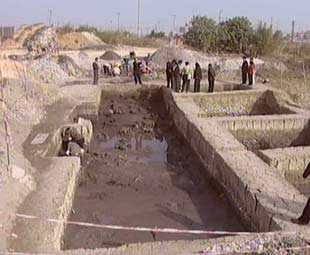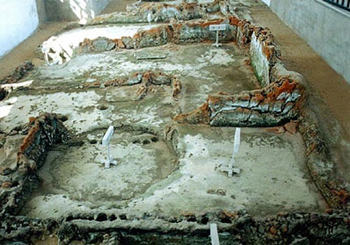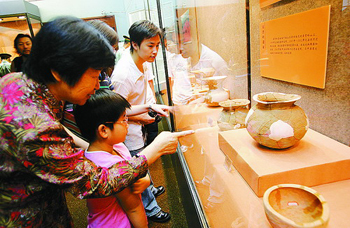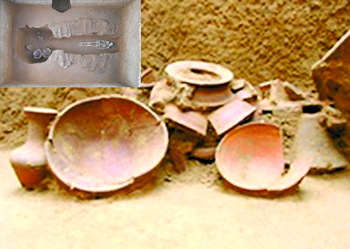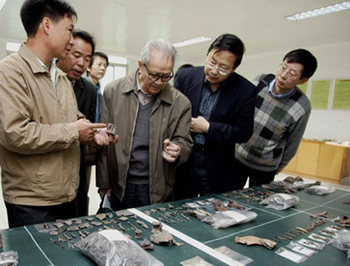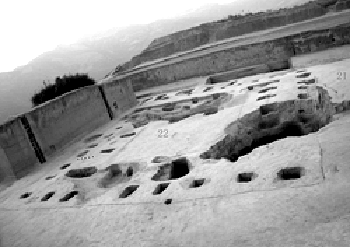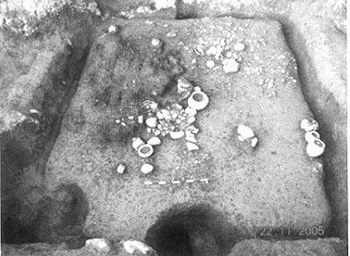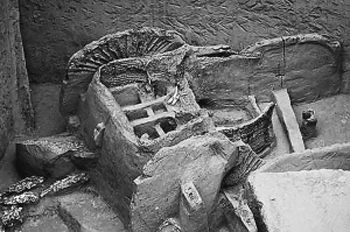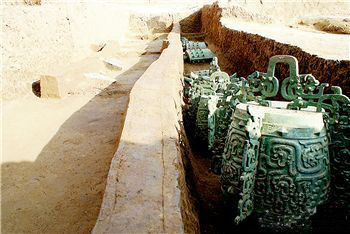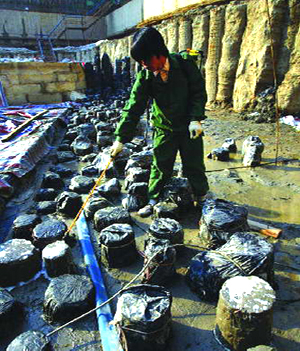| Tools: Save | Print | E-mail | Most Read |
| China Announces Top 10 Archaeological Discoveries of 2006 |
| Adjust font size: |
Under the guidance of the State Administration of Culture Heritage (SACH), China's Top 10 Archaeological Discoveries of 2006 were crowned on Sunday.
These 10 significant finds were selected from 24 nominations in an annual competition held by the Chinese Society of Archaeology and the administration's newspaper, China Culture Relics News. All archeological excavation and investigation projects in China over the previous year, which were published in China Culture Relics News before the end of February, were eligible to be candidates. The selected top 10 archaeological discoveries, dated back from the Yuan Dynasty (1271-1368) to the Paleolithic Age, included the Dahe Paleolithic cave relics at Fuyuan in Yunnan Province, the Xiantouling Neolithic remains at Shenzhen in Guangdong Province, and the Xipo Neolithic graves at Lingbao in Henan Province. The Top 10 Archaeological Discoveries of 2006, in chronological order: 1. The cave relics found at Dahe, Fuyuan County, Yunnan Province.
This Paleolithic cave, under excavation since 2002, offers evidence of the cultural exchanges between the East and West, which happened earlier in southern China than in northern China. Experts believe that the finding also indicates the existence of different communication routes. 2. The Xiantouling Neolithic remains found at Shenzhen, Guangdong Province.
The remains, which date back 6,000 to 7,000 years, provide an important criterion for archaeologists to divide historical periods during the 1,000 years at Pearl River Delta. They may also help solve the archaeological problems in Lingnan pre-history culture. 3. The Neolithic graves found at Xipo Village of Lingbao City, Henan Province.
The excavation of the graves has advanced archaeologists' understanding of the society and economy during the Middle Yangshao Culture (5000-3000 BC). During the fifth and sixth excavation conducted in 2005 and 2006, 34 tombs were found with a vast array of funerary objects. It was the first time that graves from the Middle Yangshao Culture were discovered in Lingbao, Henan Province. 4. The remains of a coconut shell mound at Gaoming, Foshan city, Guangdong Province.
The late Neolithic site, dated back 4,500 years, is now known as China's best preserved, most informative and representative coconut shell mound. 5. The relics of Shang Dynasty found at Gaohong, Liulin County, Shanxi Province.
It is the first discovery of the late Shang Dynasty (c.16th century-11th century BC) bronze culture site in the Luliang Mountain region, Shanxi Province, where 20 ramming sites were found. The discovery is of great value to the study of the unique Luliangshan bronze culture. 6. Mound tombs found in Guanjiu Village, Pucheng County, Fujian Province.
Mound tombs are considered one of the significant characters of Wuyue Culture during the Spring and Autumn Period (770-476 BC) and Warring States Period (475-221 BC). The mound tombs found at Guanjiu, Pucheng in 2006, were the first discovered in Fujian Province. Seventy-two bronze funerary articles were excavated from the tombs, making the excavation the biggest harvest of bronze items in Fujian archaeological history. 7. The graves of Warring States Period found at Majiayuan, Zhangjiachuan County, Gansu Province.
The value of excavating the tombs, which had been stripped by robbers, lies in their special structure and the five chariots found inside (four in burial chambers and one in the tunnel). The heavily decorated chariots are a rare find for Chinese archaeologists. 8. The musical instruments pit of the Qin Dynasty found at Dabaozishan relics, Li County, Gansu Province.
The discovery of the musical instruments pit may help unveil the identity of the main tomb's owner, believed to be one of the kings of the Qin State. It also provides rare source materials for research into the rites and music system, the sacrifices system and the techniques of bronze casting and foundry of early Qin Dynasty (221-206 BC). 9. The Shuangdun cemetery at Liu'an City, Anhui Province.
The discovery of this tomb of the Han Dynasty (260 BC- AD 220) and the royal cemetery of the Liu'an Kingdom may help reveal secrets surrounding the period and is of great scientific, historical, and artistic value. 10. The remains of a water gate of Yuan Dynasty at Zhidanyuan, Shanghai.
The Zhidanyuan water gate, located at the cross of Zhidan Road and Yanchang Road in Putuo District, Shanghai, has a history of 700 years. It has been confirmed to be a water facility of the Yuan Dynasty (1271-1368). Compared to similar relics, the Zhidanyuan water gate is the largest, most exquisite and well preserved. (China Daily April 11, 2007) |
| Tools: Save | Print | E-mail | Most Read |
 |
| Related Stories |
|
